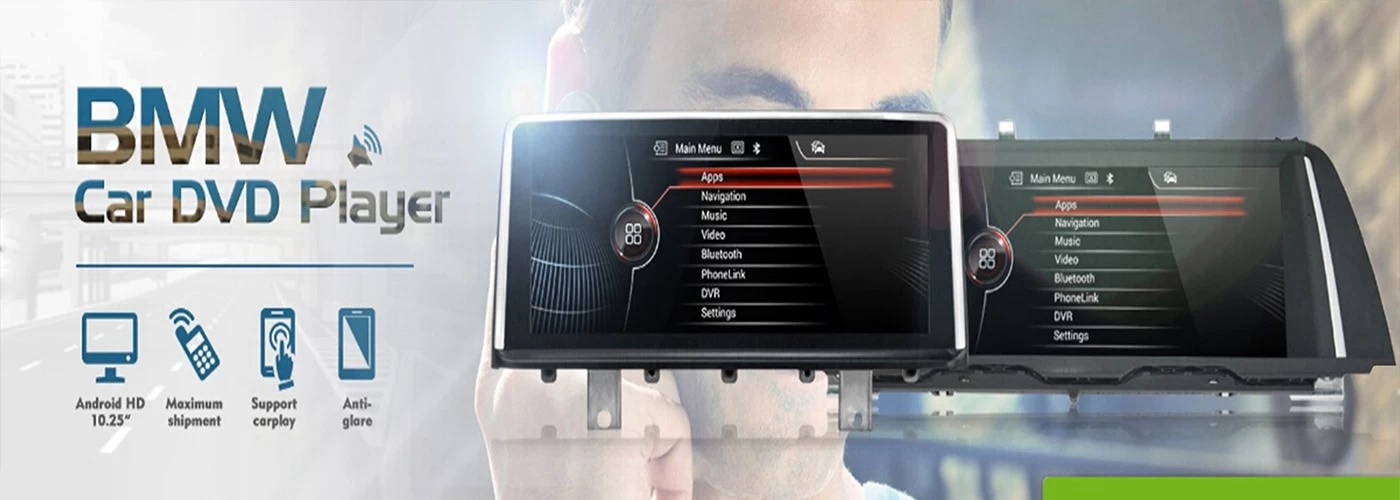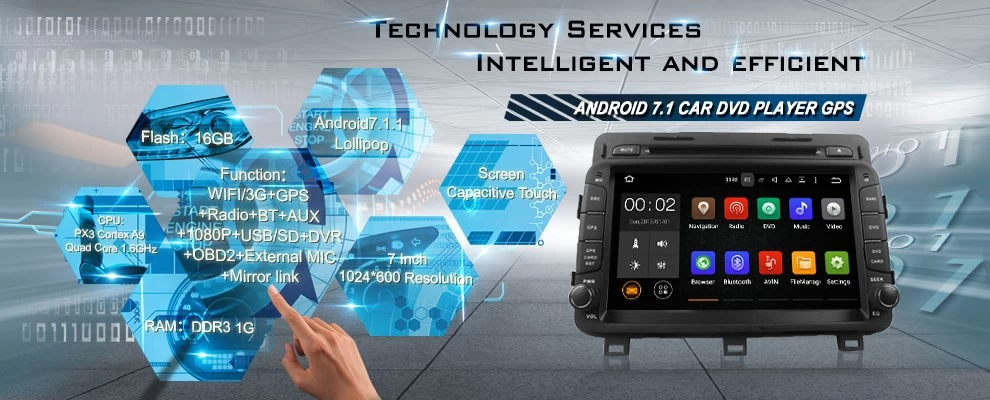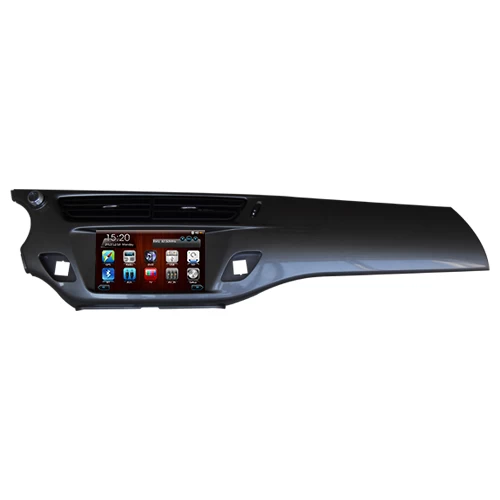Car User Perception Survey: The Most Focused Area in Security and Intelligent Interaction
2018-05-29 18:24:16
"At the beginning of 2018, the National Development and Reform Commission issued the ""Intelligent Automobile Innovation Development Strategy"" (draft for solicitation of opinions), proposing that the proportion of new smart cars in China will reach 50% by 2020; by 2025, the Chinese new car will basically realize intelligence and high-level smart cars. Realize large-scale application; By 2035, it will be the first to build a smart car powerhouse. Later, someone calculated an account, assuming that China's auto production and sales volume will reach 30 million by 2020. According to this plan, China's smart car sales will exceed 15 million by 2020.
With such a huge market potential, almost all mainstream car companies, emerging vehicle manufacturers, and technology companies have been actively occupying positions in the development of smart cars in the past two years. They are aiming at such things as LCD instruments, intelligent control, and heads-up displays. High-tech configurations such as biometrics, remote control, or direct autopilot systems with higher degree of difficulty have continued to expand people’s imaginations about the next generation of cars, and this has led to unprecedented changes in the way users perceive cars.
Taking visuals as an example, in the past, users wanted to understand the operation of automobiles, mainly through mechanical instruments. Nowadays, with the continuous development of smart cars, the functions are more and more abundant, and more and more contents are required to be presented to occupants. The forms are increasingly diversified. All-in-one LCD instruments, head-up display, intelligent control, and rear-seat vehicle loading Infotainment systems and others have begun to receive widespread attention and are widely deployed in production vehicles. For example, Jaguar's new XFL, Audi's new Q7 and other models all have four screens including a central control display, a dashboard display, and two rear display screens. The BMW 7 Series has more screens and up to six screens. .
Not only that, in order to make it easier for drivers to use the relevant functions during driving, many cars even have intelligent interaction technologies such as voice control and gesture control, which make it easier and safer for drivers and drivers to interact with systems and applications. Minimize distractions that occur during driving. It can be said that in the process of smart car technology innovation, the way users perceive the car is constantly being remodeled.
User perception, smart car interaction technology
So how does the current market view the innovation of user perception in smart cars? In related surveys conducted by Gasgoo recently, over 60% of participants believe that these innovations can make car operations smarter, more convenient, and safer. This is the general trend.
For example, voice control, in the past, when the utility vehicle was “in power”, users had to use the relevant functions in the car, such as turning on the air conditioner and closing the rear window, they had to look away from the road and find the corresponding air conditioning switch or switch off. Window button, after completing the relevant operations, can refocus the driving. This is actually a dangerous ""distracting"" behavior during the high-speed operation of the vehicle. However, with voice control, it is possible to achieve the same result with a simple “turn on the air conditioner” or “close the rear window,” while driving safety is doubled.
HUD's heat is the same reason. As part of the in-vehicle display, the HUD can allow the driver to see the vehicle-related information without looking down, thus focusing more on the road surface and improving driving safety, which is welcoming explosive growth. According to relevant statistics, the scale of the global pre-installed HUD market was approximately US$560 million in 2016, an increase of 33% over the same period of the previous year. It is expected that the market size will reach US$1.78 billion by 2020, and Geely, GAC, Chang’an, and Great Wall etc. The independent brands are expected to configure the technology in large quantities on their new models.
However, some people are not optimistic about these innovations. In this survey, 7% of the participants considered that the allocation of part of the gimmick was larger than practical and not optimistic. Or take voice control as an example. Although voice technology can now be used to make calls, send text messages, open navigation, play music, control seats, etc., but voice recognition accuracy is low, environmental interference is large, and voice commands are still dull. The technical know-how that cannot be bypassed still needs further improvement. And 28% of participants are neutral, because they think that many of the technologies are still in its infancy, and it is too early to draw conclusions.
User perception, smart car interaction technology
In terms of specific application areas, nearly 60% of the participants in this survey favored user-perceived innovation in two areas of automotive safety and intelligent interaction. In particular, automotive safety, 30% of participants hope to further enhance the perception of the field. ability. In fact, the automotive industry has always followed this rule to carry out technological innovations. That is, safety is the first factor whenever it happens. The appearance of liquid crystal instrumentation, voice control, HUD, etc., including the deep integration of advanced driver assistance systems, is actually for this purpose.
As a hotspot in recent years, smart interactive technology is also generally favored by the market. Around the human-computer interaction, the current mainstream view is to minimize unnecessary visual content and weaken the visual form to reduce the driver's information load and interference during driving. In particular, under the background of the increasingly “different forms of communication” between drivers and vehicles and the ways in which information is presented, how to minimize the physical constraints of drivers and physical performance of traditional physical buttons and display screens and reduce their information processing burden , is the current industry-wide challenge.
Some people think that gesture interaction will have a lot to do, especially the gesture interaction technology that incorporates gesture and tactile feedback, but some people think that voice control is a better choice, or a combination of multiple technologies, as to which one will eventually occupy The mainstream has yet to be further observed.
In other application areas, such as remote control, digital cockpit, smart lights, and smart entry systems, the percentage of participants who wish to further enhance their perceived ability is 15%, 13%, 9%, and 5%, respectively.
User perception, smart car interaction technology
Further analyze the future development trend of each segment, 40% of participants believe that the future human-car interaction technology will be more diversified and intelligent, and even hope to integrate more innovative technologies, such as VR technology, holographic projection, etc., to meet different Diversified car use needs of user groups.
For example, Ford has learned that it is developing a new technology for visually impaired people to help them “see” the scenery outside the window. This technology is called “Feel The View” and features vibration feedback on the window glass on the side of the car. The new device uses an integrated outward-looking camera to convert the visual content into a grayscale image, which is then converted into vibrations of different intensities that can be felt by the fingers on the car window, creating a Braille-like feeling, which leads to vision. The person with a disability describes the content of the background image, such as a hawthorn or a skyscraper.
28% of participants felt that user perception will be further integrated with smart driving assistance technology to further enhance driving safety. After all, in the future of many car companies, the car will be more than just a vehicle, but will have more extensions, such as an office or a living room, so how to meet the safety requirements of different application scenarios? It is necessary to deeply integrate various innovative user perception technologies with advanced driver assistance technologies, and to ensure driving safety while freeing drivers, passengers, feet, and eyes.
25% of the participants are more concerned about the development of the cockpit, and believe that it will continue to evolve in the direction of digitization and intelligence. This is indeed the case. As a model reshaping the main position of the travel experience, the cockpit is gradually entering into a series of cool and intelligent concepts and innovative technologies from various OEMs, parts suppliers and technology companies. The era of intelligence. For example, at 2018CES, Bosch demonstrated a future cockpit. The cockpit, with its camera and voice recognition software, recognizes the driver and automatically loads the owner's personalized settings such as seat, mirror position and favorite Music playlists, etc. to meet the individual needs of the user.
In addition to Bosch, in the newly-displayed cockpit products of automakers and parts and components companies such as Hongqi, Nazhijie, Beiteng, Foglia, Yanfeng, etc., they also demonstrated the trend of intelligence, giving the cabin a learning function. Provide more customization needs for occupants.
"
With such a huge market potential, almost all mainstream car companies, emerging vehicle manufacturers, and technology companies have been actively occupying positions in the development of smart cars in the past two years. They are aiming at such things as LCD instruments, intelligent control, and heads-up displays. High-tech configurations such as biometrics, remote control, or direct autopilot systems with higher degree of difficulty have continued to expand people’s imaginations about the next generation of cars, and this has led to unprecedented changes in the way users perceive cars.
Taking visuals as an example, in the past, users wanted to understand the operation of automobiles, mainly through mechanical instruments. Nowadays, with the continuous development of smart cars, the functions are more and more abundant, and more and more contents are required to be presented to occupants. The forms are increasingly diversified. All-in-one LCD instruments, head-up display, intelligent control, and rear-seat vehicle loading Infotainment systems and others have begun to receive widespread attention and are widely deployed in production vehicles. For example, Jaguar's new XFL, Audi's new Q7 and other models all have four screens including a central control display, a dashboard display, and two rear display screens. The BMW 7 Series has more screens and up to six screens. .
Not only that, in order to make it easier for drivers to use the relevant functions during driving, many cars even have intelligent interaction technologies such as voice control and gesture control, which make it easier and safer for drivers and drivers to interact with systems and applications. Minimize distractions that occur during driving. It can be said that in the process of smart car technology innovation, the way users perceive the car is constantly being remodeled.
User perception, smart car interaction technology
So how does the current market view the innovation of user perception in smart cars? In related surveys conducted by Gasgoo recently, over 60% of participants believe that these innovations can make car operations smarter, more convenient, and safer. This is the general trend.
For example, voice control, in the past, when the utility vehicle was “in power”, users had to use the relevant functions in the car, such as turning on the air conditioner and closing the rear window, they had to look away from the road and find the corresponding air conditioning switch or switch off. Window button, after completing the relevant operations, can refocus the driving. This is actually a dangerous ""distracting"" behavior during the high-speed operation of the vehicle. However, with voice control, it is possible to achieve the same result with a simple “turn on the air conditioner” or “close the rear window,” while driving safety is doubled.
HUD's heat is the same reason. As part of the in-vehicle display, the HUD can allow the driver to see the vehicle-related information without looking down, thus focusing more on the road surface and improving driving safety, which is welcoming explosive growth. According to relevant statistics, the scale of the global pre-installed HUD market was approximately US$560 million in 2016, an increase of 33% over the same period of the previous year. It is expected that the market size will reach US$1.78 billion by 2020, and Geely, GAC, Chang’an, and Great Wall etc. The independent brands are expected to configure the technology in large quantities on their new models.
However, some people are not optimistic about these innovations. In this survey, 7% of the participants considered that the allocation of part of the gimmick was larger than practical and not optimistic. Or take voice control as an example. Although voice technology can now be used to make calls, send text messages, open navigation, play music, control seats, etc., but voice recognition accuracy is low, environmental interference is large, and voice commands are still dull. The technical know-how that cannot be bypassed still needs further improvement. And 28% of participants are neutral, because they think that many of the technologies are still in its infancy, and it is too early to draw conclusions.
User perception, smart car interaction technology
In terms of specific application areas, nearly 60% of the participants in this survey favored user-perceived innovation in two areas of automotive safety and intelligent interaction. In particular, automotive safety, 30% of participants hope to further enhance the perception of the field. ability. In fact, the automotive industry has always followed this rule to carry out technological innovations. That is, safety is the first factor whenever it happens. The appearance of liquid crystal instrumentation, voice control, HUD, etc., including the deep integration of advanced driver assistance systems, is actually for this purpose.
As a hotspot in recent years, smart interactive technology is also generally favored by the market. Around the human-computer interaction, the current mainstream view is to minimize unnecessary visual content and weaken the visual form to reduce the driver's information load and interference during driving. In particular, under the background of the increasingly “different forms of communication” between drivers and vehicles and the ways in which information is presented, how to minimize the physical constraints of drivers and physical performance of traditional physical buttons and display screens and reduce their information processing burden , is the current industry-wide challenge.
Some people think that gesture interaction will have a lot to do, especially the gesture interaction technology that incorporates gesture and tactile feedback, but some people think that voice control is a better choice, or a combination of multiple technologies, as to which one will eventually occupy The mainstream has yet to be further observed.
In other application areas, such as remote control, digital cockpit, smart lights, and smart entry systems, the percentage of participants who wish to further enhance their perceived ability is 15%, 13%, 9%, and 5%, respectively.
User perception, smart car interaction technology
Further analyze the future development trend of each segment, 40% of participants believe that the future human-car interaction technology will be more diversified and intelligent, and even hope to integrate more innovative technologies, such as VR technology, holographic projection, etc., to meet different Diversified car use needs of user groups.
For example, Ford has learned that it is developing a new technology for visually impaired people to help them “see” the scenery outside the window. This technology is called “Feel The View” and features vibration feedback on the window glass on the side of the car. The new device uses an integrated outward-looking camera to convert the visual content into a grayscale image, which is then converted into vibrations of different intensities that can be felt by the fingers on the car window, creating a Braille-like feeling, which leads to vision. The person with a disability describes the content of the background image, such as a hawthorn or a skyscraper.
28% of participants felt that user perception will be further integrated with smart driving assistance technology to further enhance driving safety. After all, in the future of many car companies, the car will be more than just a vehicle, but will have more extensions, such as an office or a living room, so how to meet the safety requirements of different application scenarios? It is necessary to deeply integrate various innovative user perception technologies with advanced driver assistance technologies, and to ensure driving safety while freeing drivers, passengers, feet, and eyes.
25% of the participants are more concerned about the development of the cockpit, and believe that it will continue to evolve in the direction of digitization and intelligence. This is indeed the case. As a model reshaping the main position of the travel experience, the cockpit is gradually entering into a series of cool and intelligent concepts and innovative technologies from various OEMs, parts suppliers and technology companies. The era of intelligence. For example, at 2018CES, Bosch demonstrated a future cockpit. The cockpit, with its camera and voice recognition software, recognizes the driver and automatically loads the owner's personalized settings such as seat, mirror position and favorite Music playlists, etc. to meet the individual needs of the user.
In addition to Bosch, in the newly-displayed cockpit products of automakers and parts and components companies such as Hongqi, Nazhijie, Beiteng, Foglia, Yanfeng, etc., they also demonstrated the trend of intelligence, giving the cabin a learning function. Provide more customization needs for occupants.
"












